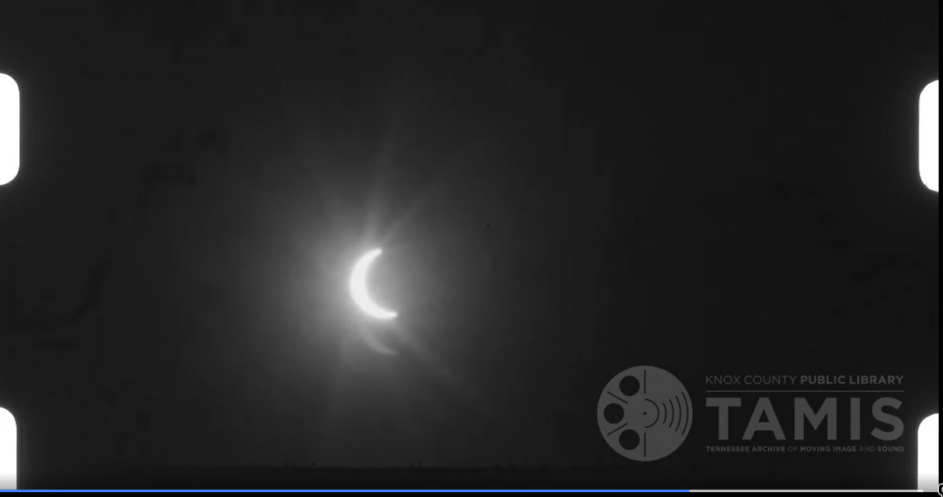Note: Mary Pom Claiborne has given her spot to John Morton today for a special showing of Rule High School’s dance band and an eclipse from 92 years ago.
Much like the April 8 solar eclipse visible from Knoxville, a solar eclipse dimmed the sky over much of New England on August 31, 1932.
In Binghamton, New York, German immigrant and photographic engineer Walther Barth filmed the event with a 16mm movie camera. Barth’s film runs a little over three minutes in length and covers the progress of the eclipse in fits and starts, starting with images of an only slightly obstructed sun and skipping to increasingly slender crescents with varying degrees of cloud interference.
Past the halfway mark, these crescents begin to swell again and end with a restored sun. Ninety-two years and numerous solar eclipses later, Barth’s eclipse film now resides in the collections of the Tennessee Archive of Moving Image and Sound (TAMIS) at the Knox County Public Library.
Barth’s eclipse film may seem rudimentary today, but considering that even modern photographers have to take special precautions to prevent damaging cameras while taking pictures of solar eclipses, the consistency of his images testifies to his professional knowledge of film exposure.
We can also assume his expertise informed his selection of just the right camera accessories required to make these exposures. Ever the assiduous hobbyist, Barth added a German-language title card to his film, noting the date and location in the same way that he titled other home movies of travel destinations and notable personal events.
This film artifact also features an unusual detail. Some spliced-in segments of the film include extra perforations for the camera mechanism to engage. These are redundant for a standard 16mm camera, but do match the specifications for 8mm home movies, where an exposed roll of film 16mm wide would be double-perforated and slit in half to accommodate smaller frames and double its runtime.
Barth has spliced in these unslit segments to match the sequence of the eclipse, so he must have had a second 16mm camera up and running 92 years ago, loaded with film intended for a different device but still 16mm compatible. Did Barth want to compare the quality of 8mm film, which had been introduced earlier that year, to 16mm? Or was he simply being resourceful with the film he happened to have available?
Lastly, like most home movie films, Barth’s eclipse film has no integrated soundtrack. TAMIS staff decided to have some fun by adding a musical track – which we selected from a 7-inch EP record of 1960s-era performances by musical ensembles at the now-closed Rule High School in Knoxville – to the digital version of the clip posted to social media.
With support from the National Film Preservation Foundation, TAMIS has fully preserved the entire Walther Barth Film collection, which includes more than 100 individual reels of film of varying lengths.
Learn more about the Walther Barth Film Collection.
John Morton is an audiovisual archivist in the McClung Historical Collection of the Knox County Public Library.

